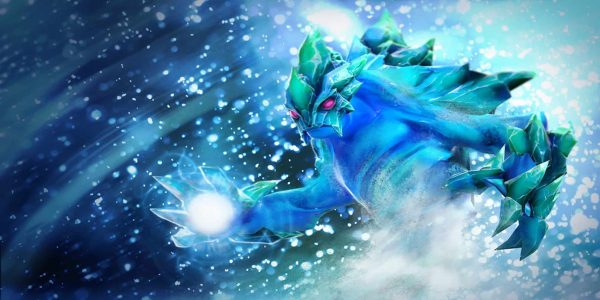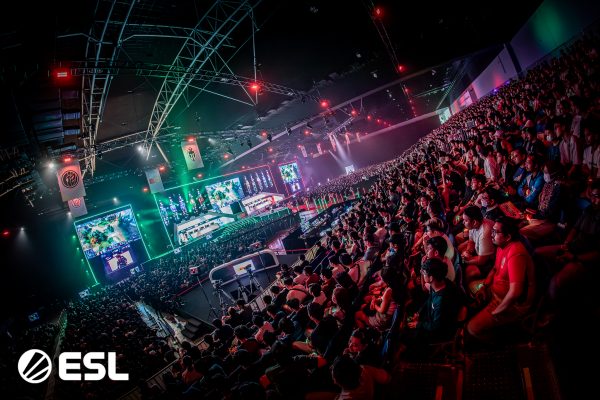It doesn’t take anything even close to a genius to know that Dota 2 never was popular in South Korea, and it likely never will be given Valve’s philosophy on how the game stands on its own when it comes to marketing and publicity. Though they once tried with the Korean server operated by Nexon several years ago, the game itself never found traction and had to concede the title of unofficial national MOBA to League of Legends.
MVP Phoenix cemented themselves as one of the only successful Korean teams in Dota 2 history.
This, of course, meant that tournaments and other such events never really took off in Korea, with only a few like the Nexon Sponsorship League and the Korean Dota 2 League (KDL) being notable examples. Needless to say, this essentially prevented the Korean scene from even getting off the ground, as if it weren’t already disadvantaged in that respect.
But for all the difficulties aspiring teams from Korea were presented with, one name stands above all the rest — as they defied the odds and brought their country’s flag to the world stage with confidence and aplomb. Though they no longer fight as one in the current era of competitive play, each member of this squad once struck fear into foes even greater than they were, for their playstyle was something that baffled past champions and budding contenders alike. More or less a flash in the pan, this team sought to win it all against all doubts and negative expectations — but disappeared over the years as their rivals proved too much for them to handle.
The name: MVP Phoenix.
Starting the Fire
The beginnings of MVP Phoenix can be traced back to the organization’s origins in StarCraft II. In March of 2012, MVP was officially recognized as a member of the Esports Federation (ESF), a governing body for esports (StarCraft II in particular) in Korea founded as a counterpart to the Korean Esports Association (KESPA). Then in 2013, presumably after the Grand Final match between Natus Vincere and Alliance at The International 3 brought so much attention to Dota 2, MVP announced that they would be fielding a Dota 2 division under the name MVP HOT6ix.
Two months later, they revealed a second lineup playing under the same banner — this time called MVP Phoenix. The squad was initially composed of Park “March” Tae-won as carry and captain, Jimmy “DeMoN” Ho as the mid laner (the same DeMoN of Evil Geniuses fame), Lee “Forev” Sang-don in the offlane, and Lee “Reisen” Jun-yeong and Lee “Heen” Seung-gon as the two supports.
The roster participated in both Korean and Chinese tournaments wherever they could at the time. Their first significant achievement was a first place finish at the second season of the Nexon Sponsorship League in late 2013, in which they won more than $75,000 in prize money. They followed this up by placing second in the inaugural season of the KDL, albeit with a different lineup wherein Heen was placed in the solo mid position and their new acquisition Kim “DuBu” Doo-young in the hard support slot.
DuBu would eventually become a permanent member of the squad, with Heen transferring to HOT6ix later on — though his services would be available to them again from time to time thereafter. DeMoN had also left to join Team Liquid before 2013 ended, which meant that there was a vacancy in the solo mid position. MVP Phoenix filled the opening with a young, up-and-coming star from the Korean scene, that being the fiery Kim “QO” Seon-yeob. This move would have a lasting impact on the team in later years, as QO would become the centerpiece of the squad after developing into an effective player.
Carrying the Flag
From there, MVP Phoenix bounced around in different regional and international competitions. They qualified for the StarLadder StarSeries through the Korean qualifier tournament, though they placed last at the main event itself in Ukraine. Back home, they redeemed themselves for faltering in the first KDL season, winning the title in the second season by defeating Pokerface — a team that included future members Kim “Febby” Yong-min and Pyo “MP” No-a.
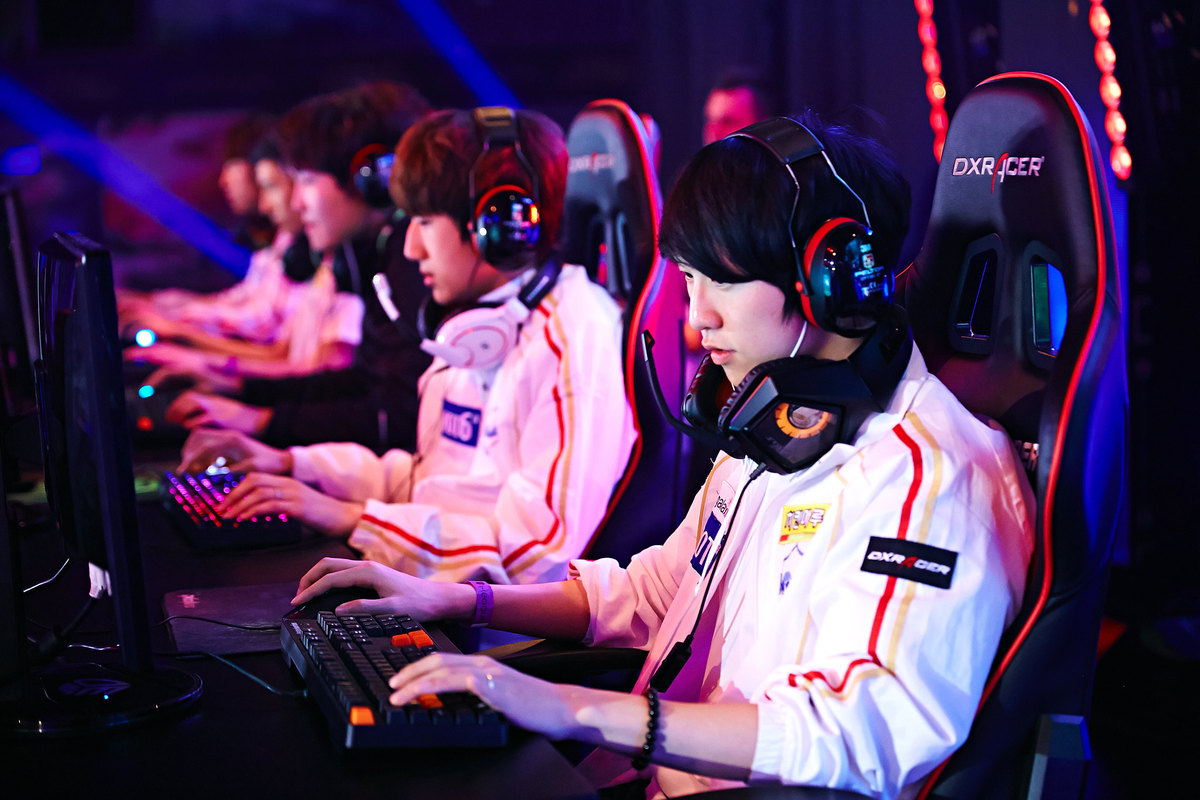
MVP Phoenix played wherever they could in the lead-up to TI4. (Photo courtesy StarLadder)
Their most important achievement in the 2013-2014 season, though, was that of being invited to the wild card qualifier for TI4 — which was then the single most lucrative event in esports history with a total prize pool of nearly $11 million. The team was flown by Valve to Seattle to play for the 16th and final slot in the tournament, but they were sadly knocked out of contention by Team Liquid in the final match of the qualifier.
Nevertheless, the team’s mere presence at the venue was enough to warrant a full broadcast of their qualifier run back in Korea, complete with a studio audience hosted by local sports broadcaster SpoTV. This goes to show the sheer support of gaming and esports culture over there, even though MVP Phoenix was the only Korean team in the field of competitors at TI4.
More importantly, however, their appearance at TI4 — despite not being in the capacity they were hoping for — would be the springboard that the team needed to achieve some form of international recognition and fame.
Moving Up
Their failure to qualify for the TI4 group stage lit a serious fire under the MVP Phoenix players, as they took it upon themselves to grind in the season that followed. To this end, they successfully defended their KDL title in the third season in October 2014, which was only wrested from their grasp by dark horse Rave in the fourth season two months later. They also qualified for i-League Season 2 and StarLadder StarSeries Season 11, where they took respectable fourth place finishes in both events.
Such a big improvement in their results compared to the prior season was enough for them to be directly invited to the inaugural Dota 2 Asia Championships in Shanghai, where they had a chance to play for a prize pool worth more than $3 million. They didn’t exactly play well at the event, though, scoring just one map win in the group stage and missing the main event entirely.
Their performances fell even further during the lead-up to TI5, as they missed out on more tournaments due to second place finishes in qualifier runs — including the TI5 qualifier itself. This forced them into a situation that they were familiar with considering where they ended up at TI4 the year before, but this time they made sure to make good on the opportunity they were given. After getting knocked into the lower bracket of the wild card tournament by eventual grand finalists CDEC Gaming, MVP Phoenix rallied against Vega Squadron to take the final available slot in in the world championship event.
Making their Presence Known
Upon arriving in Seattle, the Koreans sat down to go to work starting with the group stage. They placed fifth overall in their group, which where they were more or less expected to end up considering that the group included heavyweights like Team Secret and LGD Gaming. Starting the main event from the lower bracket wasn’t what they’d hoped for of course, but they made sure not to let it get to them as they geared up for the true test of their mettle.
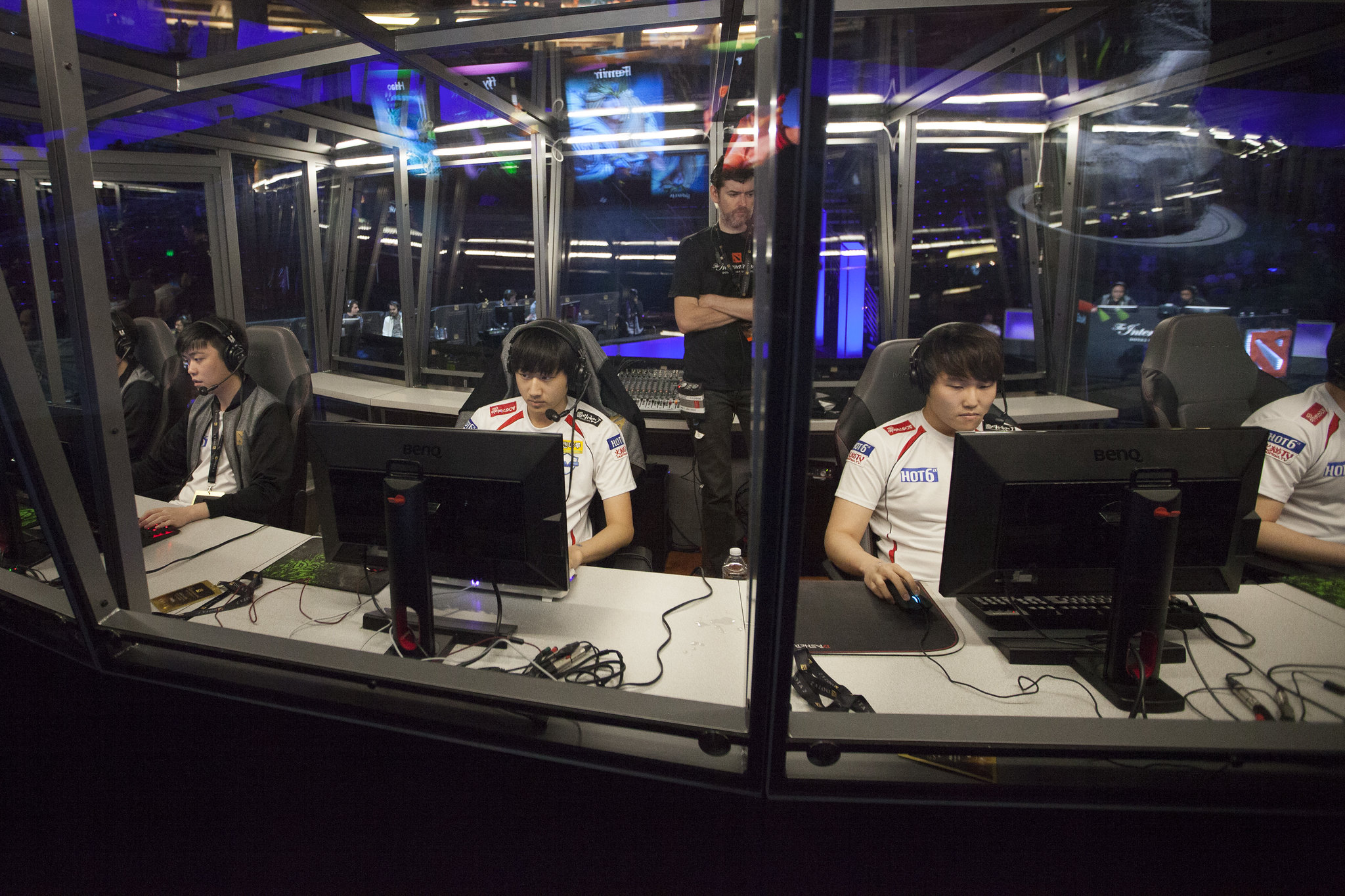
MVP Phoenix’s result at TI5 was a sign of greater things to come. (Photo courtesy Valve)
They made it past two elimination rounds, first disposing of defending International champions Newbee then dealing with Team Empire in the next. Unfortunately, their run ended at the hands of Vici Gaming, who were among the favorites to win the tournament. But despite the abrupt end to their campaign, the Koreans definitely impressed beyond expectations, and many projected them to grow immensely from their first ever International.
True enough, the season following TI5 would be the best they’d ever have.
Going Supernova
It took a while for MVP Phoenix to fully utilize the experience and learnings they took away from their TI5 run. In fact, the start to their 2015-2016 season wasn’t all that great, with their best result before the new year being fourth place at the Game Show Global Esports Cup — a six team affair which featured only $280,000 in prize money.
Their fortunes turned around almost immediately upon the arrival of 2016. They successfully qualified for the Shanghai Major, a huge boon for them as they were unable to do the same for the Frankfurt Major three months prior. The Koreans then set out to prove themselves once again, this time in somewhat familiar territory given their semi-frequent appearances in Chinese tournaments back in 2014.
What happened at Shanghai was almost beyond their wildest dreams. They went undefeated in their group of four squads, playing flawlessly even against the juggernaut Team Secret. It was at this event that MVP Phoenix took the highly aggressive, devil-may-care play style popularized by TNC Predator in the Southeast Asian scene (which MVP Phoenix was a part of) and perfected it until it was nearly unstoppable. Affectionately referred to as “caveman Dota”, their strategy was all about constantly running at enemy heroes without a care in the world — something that the players in the SEA servers were notorious for.
They exited the group stage with a huge amount of momentum, and they made sure to use it to get past some truly tough competition. They defeated the TI3 champions Alliance in the first round of the upper bracket, and ran roughshod over their SEA rivals Fnatic after being knocked down to the lower bracket by Team Liquid. The miracle run was halted by EG in the round after, but fourth place at a Valve event for the only notable Korean team in existence was more than remarkable. They had well and truly grown into formidable opponents.
The Roaring Flame
Shanghai was just the first stop for them in the 2016 season, however. Not content with placing just outside of the podium in China, MVP Phoenix continued to make their mark on the scene internationally. Having qualified for Dota Pit League Season 4 three months prior to the Shanghai Major, the Koreans went to Croatia and bested teams like Frankfurt Major champions OG on the way to the Grand Finals. Upon getting there, they swept the top-billed EG aside like nobody’s business, making Dota Pit their best result in a non-Valve event since the Nexon Sponsorship League.
Two months later, they won more than $100,000 at the WePlay! Dota 2 League, staging a near-perfect run through the upper bracket to take first place. That plus the result at Dota Pit were enough for Valve to invite them to the Manila Major, thus saving them the trouble of having to go through the SEA qualifiers. Of course, they placed well in Manila just like they were expected to. Although they couldn’t crack the top four spots, they survived long enough to be in the top six after taking the red-hot LGD Gaming to all three maps in their lower bracket series.
With TI6 looming over the horizon, the result in Manila was all they needed to seal the deal when it came to a direct invite to Seattle. Valve gave them the green light shortly after Manila, and the Koreans’ third consecutive trip to the world championship tournament was secure.
Last Hurrah
Once August 2016 came around, MVP Phoenix were, for the first time in their careers, one of the frontrunners at The International. Although they weren’t necessarily heavy favorites, many were in agreement that they at least stood a decent chance of finally breaking into the top three or even winning the tournament — especially compared to their two previous campaigns.
They ended up falling short of the expectations set forth, but the Koreans made sure that they went down clawing and scratching at their opponents. They placed well enough in the group stage to earn a spot in the upper bracket, which immediately turned into a guaranteed top six result after an upset victory over the four-time Valve Major champions OG in the first round. Naturally, they turned to their usual caveman Dota antics at the event, striking utter terror and fear in the hearts of their opponents as they went through the bracket.
Regrettably, their run in the upper bracket was stopped cold by eventual TI6 champions Wings Gaming, and they were summarily eliminated by rivals Fnatic in the lower bracket. Nevertheless, their result at TI6 stands today as their best finish at The International, and as the peak of their professional Dota 2 careers as an all-Korean squad. None of the members of the TI6 roster have been able to replicate their success since then.
The Phoenix Slumbers
Perhaps the saddest part of this story is that all of MVP Phoenix has pretty much faded away from tier 1 Dota after their top six finish at TI6. In the months after, MP left to join Team Secret for a relatively successful year with Clement “Puppey” Ivanov. Forev did the same thing, but returned to the squad after just three months with Secret. The rest signed new contracts with MVP, but they were released from the team just five months after.
From there, each member went off to play for different squads in 2017, with QO in particular joining Fnatic for their campaign at TI7. QO’s run with Fnatic ended in utter misery, though, as they failed to avoid elimination in the group stage. The TI6 MVP roster reformed in September 2017 as Team Phoenix, with US-based organization Immortals picking them up just two months after. Their stint under CEO Noah Whinston’s watchful eye bore no fruit, though, and eventually the squad was completely shut down after just a year of existence.
Nowadays, the Koreans are all scattered across the lands — mostly serving coaching roles as opposed to being active players. March has had the most success in recent months, having won the first Major of the cut-down 2019-2020 Dota Pro Circuit season in China with TNC Predator. Febby meanwhile is the current coach of this same TNC lineup.
QO currently serves as the coach for Team Oracle, which he helped form in Australia in September last year. Reisen was on Team Oracle from May to September of 2019 as well, but has since been inactive.
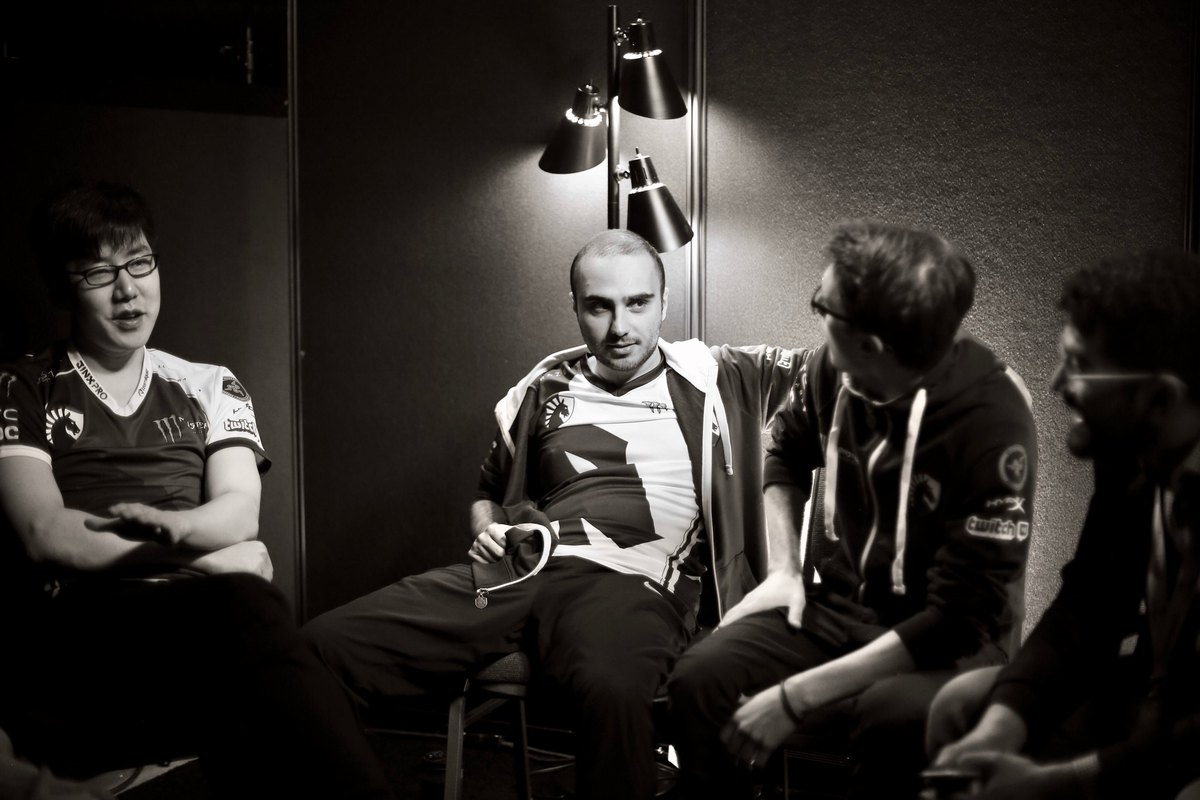
Heen (left) has enjoyed plenty of success as a coach after his time with MVP Phoenix. (Photo courtesy Valve)
Likewise, MP is the coach for T1’s Dota 2 squad, though as of now the roster is composed entirely of Indonesian players as opposed to Koreans. Forev was also part of this T1 squad’s first iteration, but left after nearly a year. DuBu is now the coach of Croatia-based squad CR4ZY, which most recently placed second at the Great American Rivalry. When it comes to coaching however, Heen has found the most success. He coached Kuro Salehi “KuroKy” Takhasomi and the rest of Team Liquid to victory at TI7, and is currently imparting his wisdom upon Puppey and Team Secret.
Given that they haven’t been together for a few years now, it is doubtful that we will ever see the Phoenix rise from the ashes and take the world by storm as they did in 2016. A most unfortunate notion, indeed, considering that they were truly an entertaining squad who took no prisoners with their play style and proved that, sometimes, banging your head against a wall until it breaks does work.
Alas, their strategy was eventually figured out by their opponents, and soon they found themselves unable to compete at the highest level as effectively as before. But the three years they spent developing into a team that could go toe-to-toe with marquee lineups will forever be remembered — especially as the team itself was from a country not known for a love of Dota 2.
